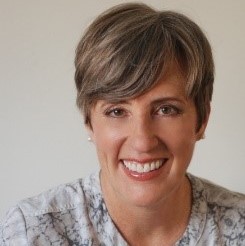How can the Question Formulation Technique (QFT) be not only transformative for students, but also for teachers and adult learners?
I first learned the QFT when I attended the Right Question Institute conference in Boston in the summer of 2015. I was working as a consultant with a small arts education nonprofit in the Los Angeles area and was tasked with learning the QFT to support their staff of teaching artists. The staff were going to apply the QFT in their work with elementary school students as well as support a nascent professional learning community I was helping them build.
While it was clear that the QFT was a great strategy for working with students, I was excited by the possibilities of using it to work with adults. I saw a golden opportunity to use the method to help adults identify key goals and next steps in their own self-directed professional growth trajectory. Okay, if that didn’t make any sense, let me put it another way. Many of us who have worked in education for a while have received professional development that was less than effective. But what I have noticed, besides uninspired strategies and lecture-based deliveries, is that recipients of professional development rarely, if ever, have a say in what training they receive, much less have a chance to craft a plan of true professional growth and development over the span of a career. Hence, educators tend to be recipients, not drivers, of professional learning. And here is where the QFT comes in.
Imagine working with a group of educators, or any group of professionals, to create a climate of inquiry and choice that supports those individuals to identify personalized and desired professional learning goals. Imagine the efficacy and the enhanced motivation made possible by activating those individuals to jointly author their own professional growth. And then imagine that growth spans the length of a career, not a semester or a single stint at one school. A mindset of inquiry is a gift that keeps on giving, professionally that is.
While I’ve been out of the classroom for 20 years, I now work with school districts, nonprofit organizations, and governmental agencies to create strategic plans. Since that summer of the QFT back in 2015, I’ve worked with many boards, staff, and groups of educators to use the QFT to create actionable questions and help clarify program goals. In some of those instances, I have had individuals or teams develop their own Question Focus (QFocus) during the session or choose a QFocus that they are most interested in from a list of options. This builds in choice and autonomy for participants to work on something that genuinely feels relevant and important to them.
For the purpose of individualized professional growth, the QFocus could come from:
- Asking participants to create statements of fact after a review of data (e.g., “My performance review indicated that I do not utilize technology as expected,” or, “In my department, low-income students are not performing as well as middle-income students on a state assessment.”)
- Having participants choose from a list of pre-populated statements that represent common scenarios (e.g., “I want to collaborate but don’t know how to shift the culture with my team,” or ,“I no longer have the same enthusiasm for my work.”)
- Working as a group on a guided reflection in which participants create statements of what “is,” based on a SWOT analysis (strengths, weaknesses, opportunities, and threats) of their context or environment. Participants can then pick one area to focus on, or the whole group can discuss common patterns in their individual SWOT analyses, and pick one of them as a QFocus.
Because I often ask participants to choose a personalized QFocus that they have a visceral and emotional connection to, participants sometimes generate questions as an individual, rather than as a group. With individual question generation, I adapt the four rules as follows:
QFT Rules Adapted for Individuals
- Ask as many questions as you can
- Do not stop to judge or ponder your own questions
- Write down every question exactly as it first occurred to you
- Change any statement into a question
Once individuals create their lists of questions, I utilize many, but not always all, of the remaining steps of the QFT. I do, however, ask individuals to number the questions, identify questions as open or closed, change one open-ended question into a closed-ended question and vice versa, and prioritize the questions while noting the location of three priority questions in the original list. I then guide individuals to choose the highest leverage question from their three priority questions.
With that high-leverage, top-priority question, participants then generate a list of responses to that question. It is here that I use another process, from the Institute of Cultural Affairs, called Technology of Participation. In this method, adapted here for individual use, participants generate multiple answers or responses to the focus question, which was generated by the QFT, on mini sticky notes. Ideas or actions are then grouped into columns of similar intent and named with powerful and concise language. There is an alchemy that happens as seemingly random ideas and actions begin to form a cohesive path, and for some, this process creates the beginning of a personal professional growth action plan. But more than that, working with one’s own questions in this structure creates a personal practice of inquiry (thanks to the QFT) that leads to active solution seeking and personal responsibility.
I’ve seen firsthand the power of the QFT to awaken and activate professionals to identify and own their own professional growth goals and to begin to create a subtle but deeply powerful shift in thinking. Here is feedback from two participants from a 2017 workshop with the Actor’s Fund (part of the Screen Actors Guild) after engaging in this process:
- “Being able to ask questions and narrow them down, organizing my thoughts, made me realize I am not as all-over-the-place as I had thought. It was very helpful in steering me in the right direction.”
- “It was a great way to see barriers and to plan a path to go beyond them toward one’s desire to fulfill one’s life.”
I am a believer in self-efficacy that is self-identified and self-motivated, and that can begin by simply having the chance to ask your own questions.
Are you working in a professional learning role with adults? Let’s talk! I welcome your thoughts and questions as you explore using the QFT for adult professional growth.
 Sandy Seufert is a Los Angeles-based consultant who specializes in strategic planning and arts education consultation. She has worked in education and arts education for 30 years, much of that with an emphasis on professional development for classroom teachers and teaching artists. Always mindful of her own professional growth trajectory, she is grateful to Luz Santana and Dan Rothstein and for how she has grown her work with the Question Formulation Technique. For more information, contact Sandy at sandy@sandyseufert.com
Sandy Seufert is a Los Angeles-based consultant who specializes in strategic planning and arts education consultation. She has worked in education and arts education for 30 years, much of that with an emphasis on professional development for classroom teachers and teaching artists. Always mindful of her own professional growth trajectory, she is grateful to Luz Santana and Dan Rothstein and for how she has grown her work with the Question Formulation Technique. For more information, contact Sandy at sandy@sandyseufert.com
